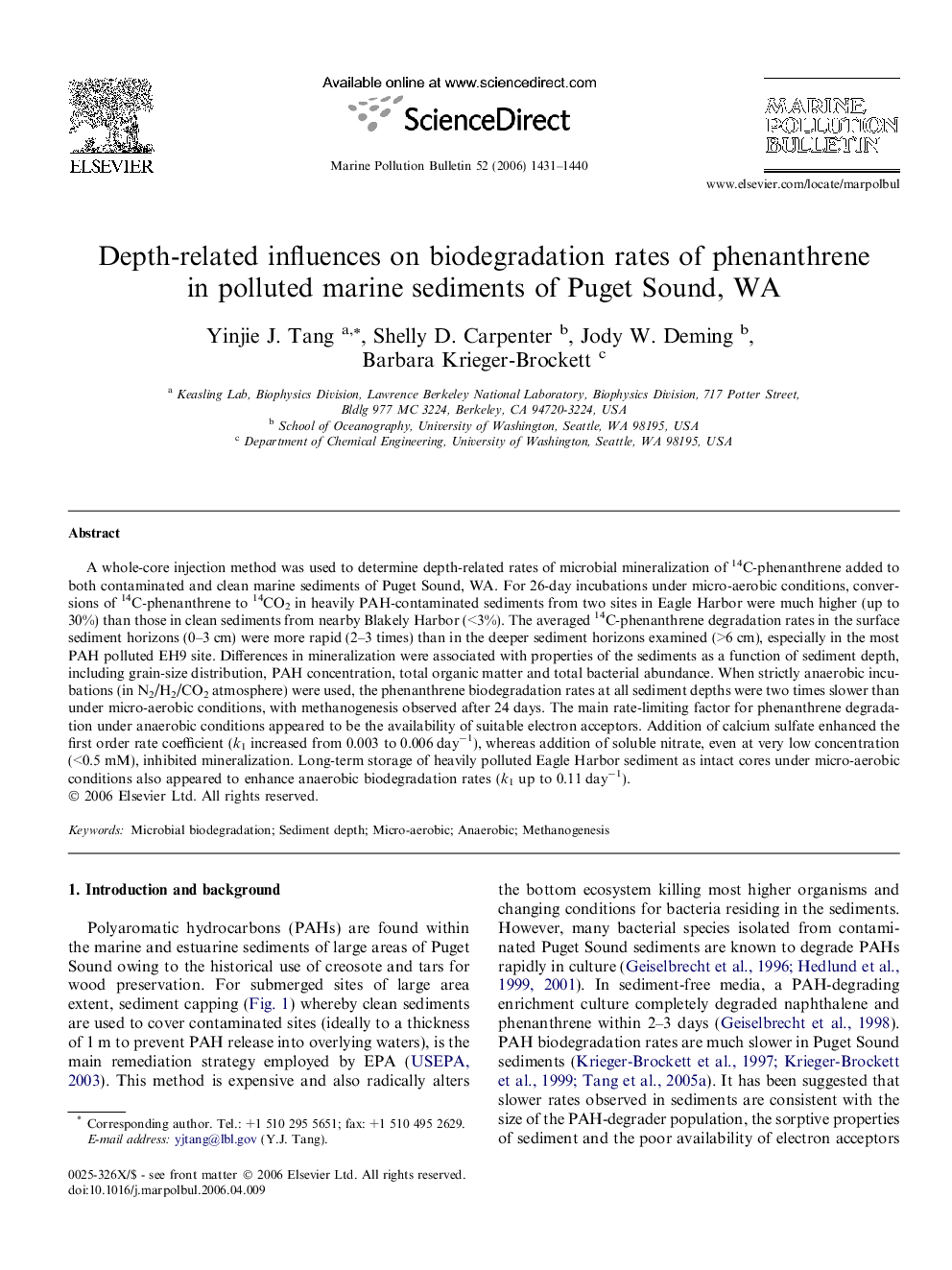| Article ID | Journal | Published Year | Pages | File Type |
|---|---|---|---|---|
| 4478059 | Marine Pollution Bulletin | 2006 | 10 Pages |
A whole-core injection method was used to determine depth-related rates of microbial mineralization of 14C-phenanthrene added to both contaminated and clean marine sediments of Puget Sound, WA. For 26-day incubations under micro-aerobic conditions, conversions of 14C-phenanthrene to 14CO2 in heavily PAH-contaminated sediments from two sites in Eagle Harbor were much higher (up to 30%) than those in clean sediments from nearby Blakely Harbor (<3%). The averaged 14C-phenanthrene degradation rates in the surface sediment horizons (0–3 cm) were more rapid (2–3 times) than in the deeper sediment horizons examined (>6 cm), especially in the most PAH polluted EH9 site. Differences in mineralization were associated with properties of the sediments as a function of sediment depth, including grain-size distribution, PAH concentration, total organic matter and total bacterial abundance. When strictly anaerobic incubations (in N2/H2/CO2 atmosphere) were used, the phenanthrene biodegradation rates at all sediment depths were two times slower than under micro-aerobic conditions, with methanogenesis observed after 24 days. The main rate-limiting factor for phenanthrene degradation under anaerobic conditions appeared to be the availability of suitable electron acceptors. Addition of calcium sulfate enhanced the first order rate coefficient (k1 increased from 0.003 to 0.006 day−1), whereas addition of soluble nitrate, even at very low concentration (<0.5 mM), inhibited mineralization. Long-term storage of heavily polluted Eagle Harbor sediment as intact cores under micro-aerobic conditions also appeared to enhance anaerobic biodegradation rates (k1 up to 0.11 day−1).
